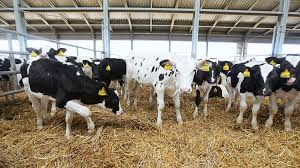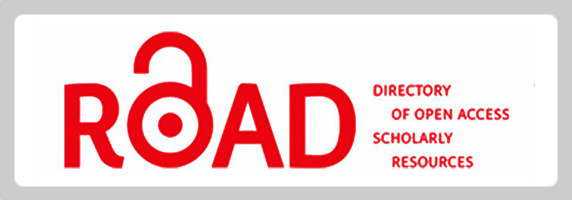Husbandry practices of Simada Cattle Population in Three Districts of North-Western
Abstract
ABSTRACT
The study was conducted to assess husbandry practices of Simada cattle population in three districts of North-Western Ethiopia. Data were collected through semi-structured questionnaire, focus group discussions, and field observations. A total of 180 households 60 from each district were randomly selected to fill the structured questionnaire. The study revealed that the average cattle herd size was 6.51± .094 heads per household. The purposes of keeping cattle were for traction, milk production, income generation, trashing of crop, manure (to increase soil fertility), social status and meat. Natural pasture and crop byproducts were major feed sources in study area.Most of the respondents housed cattle at night and part of the day. The major sources of water for livestock were rivers, pond, springs/streams and temporary water. Constraints of cattle production were feed shortage, disease, and lack of improved breeds ranking 1st, 2nd and 3rd, respectively. Feed shortage is the most limiting factor for cattle production in the study area and need to be addressed. Provision of strong extension services to farmers for feed resource development and training them in basic principles of collection, storage of harvested feed resources and crop residues should be required.
Downloads
References
Andualem T, Berhan T, Gebeyehu G andErmias B. 2015. Characterization of cattle husbuandry practices in Esseraworeda, dawuro zone, southern Ethiopia. Afr,J.Agric.res.10(34):3421-3435.
AyantuMekonnen, AynalemHaile, TaddeleDessie and YosefMekasha. 2012. On farm characterization of Horro cattle breed production systems in western Oromia, Ethiopia. Livestock Research for Rural Development.Volume 24, Article #100.
Aynalem, H., Workneh, A., Noah, K., Tadelle, D. and Azage, T. 2011.Breeding strategy to improve Ethiopian Boran cattle for meat and milk production. Improving productivity and marketing success of Ethiopian Farmers. Project Working Paper 26.ILRI (International Livestock Research Institute), Nairobi, Kenya. pp 37-45
Belay Dugma, AzageTegegne and Hedge, BP. 2012. Smallholder livestock production system in Dandi district, Oromia Regional State, central Ethiopia.Global Veterinaria, 8 (5): 472-479. IDOSI publications.
BeleteAnteneh, AzageTegene, FekaduBeyene and BerhanuGebrhemedin. 2010. Cattle milk and meat production marketing system and opportunities for market-orentation in fogera, Amhara Region, Ethiopia. (IPMS) Improving Productivity and Marketing Success of Ethiopian Farmers.International Livestock Research Institute, Nairobi, Kenya.pp 65.
BerisoKibru, TamirBrihanu. andFeyeraTeka. 2015. Characterization of Smallholder Cattle Milk Production System in AletaChukko District, Southern Ethiopia. Journal of Advanced Dairy Research 3: 132. doi:10.4172/2329-888X.1000132.
CSA (Central Statistical Authority). 2013. Agricultural sample survey, report on livestock and livestock characteristics for the year 2013. CSA, Addis Ababa, Ethiopia, 194 pp.
CSA (Central Statistical Authority). 2015. Crop and livestock product utilization. Agricultural sample survey (September – January, 2014/2015); volume VII
DemissuHundie, FekaduBeyene and GemedaDuguma. 2013. Dairy Productive Potential, Challenges and Production opportunities of Horro and their F1 Jersey Crossbred Cows: A Case of Guduru Livestock Production and Research Center and Its Surroundings, West Oromia, Ethiopia. Science, Technology and Arts ResearchJournal, 79-84. .
FAO (Food and Agricultural Organization). 2012. Phenotypic characterization of animal genetic resources. FAO Animal Production and Health Guidelines No. 11. Rome.
FasilGetachew and WorknehAyalew. 2014. On-farm phenotypic characterization of indigenous cattle populations of Awi, East and West Gojjam Zones of Amhara Region, Ethiopia. Research Journal of Agriculture and Environmental Management. Vol. 3(4), pp. 227-237, April, 2014. Available online at http://www.apexjournal.org.
Getie, A., H/Melekot, M., Taye, M., Wuletaw, Z. and Tesfa, A. 2015.A Survey on Breeding Practice, and Productive Performance of Simada Cattle in TachGayint District, Ethiopia.Journal of Life Science Biomedication5 (6): 171-180.
LayGayint District office of Agriculture. 2016. LayGayintdistrict office of Agriculture and Rural development Annual report (unpublished).
Mekuriaw, G. and Kebede, A. 2015. A review on indigenous cattle genetic resources in Ethiopia: adaptation, status and survival. Online Journal of Animal Feed Resources, 5(5): 125-137.
Mulugeta and berhan. 2015. Production system and phenotypic characterization of begait cattle and effects of supplementation with concentrate feeds on milk yield and composition of begait cows in humera ranch, western Tigray, Ethiopia. PhD dissertation Addis Ababa University.
Mwambene, P.L., Katule, A.M.,Chenyambuga, S.W. and Mwakilembe, P.A.A. 2012. Fipa cattle in the southwestern highlands of Tanzania: Socio-economic roles, traditional management practices and production constraints. Animal Genetics ResourcesInformation Bulletin 51.15-29.
Rege, J. E. O. and Tawah, C. L. 1999.The state of African cattle genetic resources. I. Taurine hump less (Bostaurus) and zebu (Bosindicus) cattle. Animal Genetic Resources Information, 26:10-13.
Seid, G. and Berhan, T. 2014.Assessment of Cattle Husbandry Practices in BurjiWoreda, SegenZuria Zone Of SNNPRS, Ethiopia.International Journal of Technology Enhancements and Emerging Engineering Research, VOL 2, ISSUE 4 ISSN 2347-4289.
Simada District Office of Agriculture. 2016. SimadaDistrict Office of Agriculture and Rural Development Annual Report (unpublished).
TachGayint District office of Agriculture. 2016. TachGayintdistrict office of Agriculture and Rural development Annual report (unpublished).
TesfayeMengsitie, 2007. Characterization of cattle milk and meat production, processing and marketing system in Metema district, Ethiopia.MSc thesis, Hawassa University, Awassa, Ethiopia.209 pp.
USAID (united states agency for international development). 2009. USAID Country Health Statistical Report. USAID, Addis Ababa, Ethiopia.
ZewduWuletaw, 2004. Indigenous cattle genetic resources, their husbandry practices and breeding objectives in North-western Ethiopia.An MSc Thesis, Haramaya University., Haramaya, Ethiopia.











